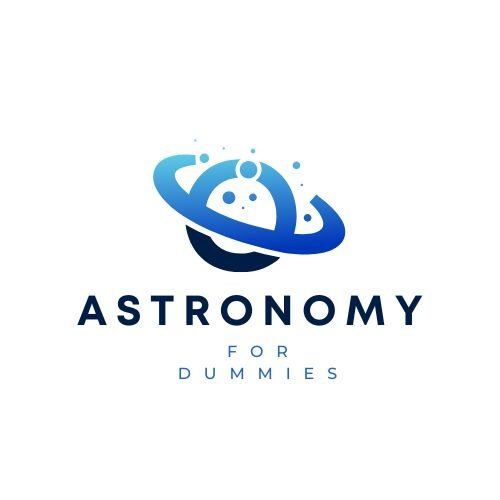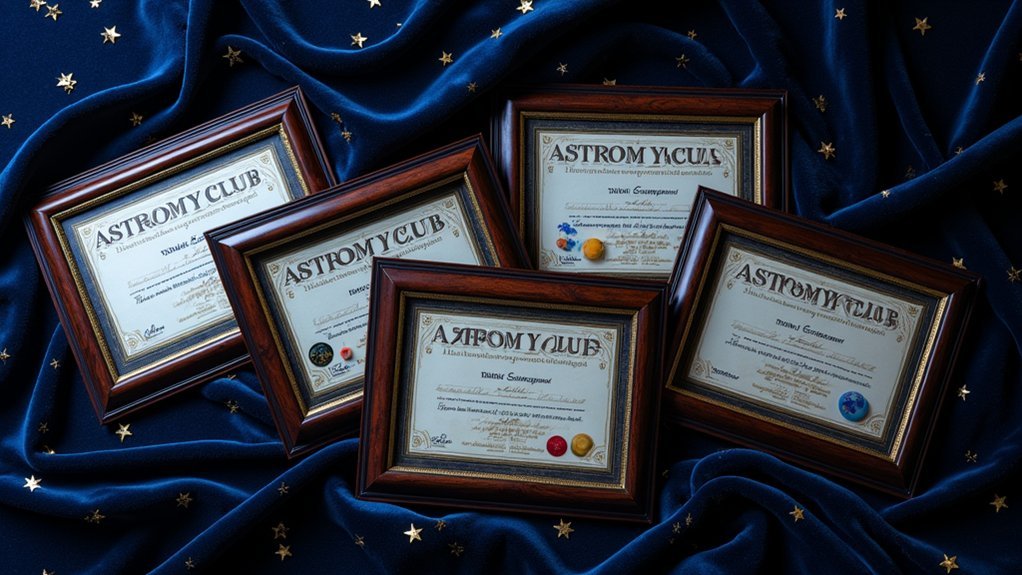Mastering planetary orbits begins with understanding Kepler’s three laws: planets follow elliptical paths, sweep equal areas in equal times, and have periods proportional to their distances. You’ll need to grasp orbital parameters like semi-major axis and eccentricity, which determine a planet’s path shape and velocity variations. Earth’s orbit has slight eccentricity (0.017), creating distance variations throughout the year. The principles that guide planets also power our modern space exploration endeavors.
Fundamentals of Planetary Motion: Gravity and Celestial Bodies

While you may observe stars and planets as static points of light in the night sky, they’re actually in constant motion, following precise orbital paths determined by gravity. This fundamental force acts as the centripetal force that keeps planets traveling in elliptical orbits around their stars.
The laws of planetary motion, first described by Kepler, explain these celestial mechanics. Planets move in ellipses with the Sun at one focus, not the center. The strength of gravitational attraction varies with distance—planets closer to their star experience stronger pulls than those farther away, affecting their orbital speed and path.
Each orbit has a specific eccentricity value between 0 and 1, indicating how circular or elongated it is. Over time, gravitational interactions between celestial bodies cause orbital perturbations, gradually altering their trajectories.
Kepler’s Laws: The Mathematical Foundation of Orbits
You’ll notice that planets don’t follow perfect circular paths, but rather travel in ellipses with the Sun positioned at one focus as described by Kepler’s First Law.
When observing planetary motion, you can see that the speed isn’t constant—planets move faster when closer to the Sun and slower when farther away, which Kepler elegantly explained with his Second Law‘s equal areas principle.
These mathematical relationships weren’t merely academic discoveries but revolutionary insights that transformed our understanding of the cosmos and eventually led to Newton’s thorough theory of gravity.
Elliptical Path Fundamentals
When Johannes Kepler formulated his three laws of planetary motion in the early 17th century, he revolutionized our understanding of how celestial bodies move through space.
His First Law established that planets travel in elliptical orbits with the Sun positioned at one focus—not at the center as previously believed.
You’ll notice each planet’s orbit has a unique eccentricity value that measures its deviation from a perfect circle. Earth’s orbit is nearly circular with an eccentricity of 0.017, while Pluto’s more elongated path measures 0.2488.
When studying planetary motion, remember that Kepler’s Second Law explains why planets move faster at perihelion (closest approach) and slower at aphelion (farthest point).
This phenomenon occurs because a line connecting a planet to the Sun sweeps out equal areas in equal times.
Equal Areas Rule
Kepler’s Second Law illuminates the mathematical precision behind planetary motion.
You’ll observe that a line connecting a planet to the Sun sweeps equal areas in equal time intervals, regardless of the planet’s position in its orbit. This elegant principle reveals that planets don’t move at constant speeds—they accelerate when closer to the Sun and slow down when farther away.
When you’re tracking orbital mechanics, this rule helps you predict a planet’s changing velocity throughout its journey. The mathematical foundation lies in the conservation of angular momentum. As a planet approaches the Sun, it must speed up to maintain this balance.
You can apply this principle beyond our solar system’s planets—it works equally well for comets, moons, and other celestial bodies, demonstrating the universal applicability of Kepler’s insights.
Understanding Elliptical Paths and Orbital Elements

You’ll grasp planetary motion better by understanding that elliptical paths follow Kepler’s First Law, where planets trace oval-shaped orbits with the Sun at one focus.
The eccentricity value determines how stretched an orbit appears, ranging from nearly circular like Earth’s (0.017) to elongated like Pluto’s (0.2488).
When discussing orbital parameters, specific terms identify key positions—perihelion marks a planet’s closest approach to the Sun, while aphelion indicates its farthest point.
Kepler’s Laws Explained
In the early 17th century, Johannes Kepler revolutionized our understanding of planetary motion through three elegant laws that defied the centuries-old belief in perfect circular orbits.
His First Law reveals that planets travel in elliptical paths with the Sun at one focus. The Second Law demonstrates that planets move faster when closer to the Sun, as the imaginary line connecting planet to Sun sweeps equal areas in equal time intervals. The Third Law establishes the mathematical relationship T² = k × r³, linking orbital period to distance.
| Law | What It Means For You |
|---|---|
| First | Your understanding of orbits shifts from perfect circles to dynamic ellipses |
| Second | You’ll observe seasonal variations due to changing orbital speeds |
| Third | You can calculate any planet’s orbital period knowing its distance |
| Eccentricity | You’ll grasp why some orbits like Earth’s (0.017) are nearly circular while others like Pluto’s (0.2488) are elongated |
Eccentricity Determines Shape
The seemingly subtle parameter of eccentricity actually defines the entire character of a planet’s orbital journey. When you’re analyzing planetary orbits, think of eccentricity as a spectrum ranging from 0 to 1, where 0 represents a perfect circle and 1 indicates a parabolic path.
Earth’s orbit exhibits minimal eccentricity (0.017), keeping it on a nearly circular path around the Sun. In contrast, Pluto’s more eccentric orbit (0.2488) creates a notably elongated ellipse. This measurement directly affects how the distance between a planet and the Sun varies throughout its year.
You’ll notice that as eccentricity increases, the difference between a planet’s closest approach (periapsis) and furthest point (apoapsis) grows dramatically, influencing seasonal variations and climate patterns on these celestial bodies.
Naming Orbital Parameters
When astronomers and orbital mechanics describe a planet’s journey through space, they rely on a precise set of parameters that completely define an elliptical path. You’ll need to understand these key elements to grasp how planets move through the cosmos.
| Parameter | Definition |
|---|---|
| Semi-major axis (a) | Half the longest diameter; determines orbit size |
| Eccentricity (e) | Values from 0-1; measures deviation from circularity |
| True anomaly | Angular position of planet along orbit at specific time |
| Argument of periapsis | Angle defining ellipse orientation in orbital plane |
Each parameter serves a specific purpose in orbital calculations. Earth’s orbit has an eccentricity of about 0.017, making it nearly circular, while other planets have more elongated paths. You’ll find these elements essential when calculating orbital positions and predicting celestial movements.
Orbital Velocity and Speed Variations Through an Orbit

As planets journey through their elliptical paths around the Sun, they experience significant changes in their orbital velocities, a phenomenon directly tied to their changing distances from our star.
This relationship follows Kepler’s Second Law, where planets move faster at perihelion (closest approach) and slower at aphelion (farthest point).
Earth travels at an average orbital velocity of 29.78 km/s (107,000 km/h), while Mercury, the closest planet, zooms at 47.87 km/s.
Mercury races around the Sun at a blistering 47.87 km/s, significantly faster than Earth’s more leisurely 29.78 km/s pace.
Mars, being farther from the Sun, orbits more slowly at 24.07 km/s, taking 687 Earth days to complete one revolution.
This speed variation stems from conservation of angular momentum – as a planet moves closer to the Sun, it must speed up to maintain the product of radius and velocity constant.
Calculating Orbital Periods and Their Significance
Understanding a planet’s orbital period reveals essential insights into celestial mechanics and the structure of our solar system.
You’ll find that Earth’s orbital period is approximately 365.25 days—the time needed to complete one full journey around the Sun.
Kepler’s Third Law provides you with a powerful tool for calculating these periods, expressed as T² = k · r³.
This means the square of a planet’s orbital period is proportional to the cube of its average distance from the Sun.
Mars demonstrates this relationship perfectly, orbiting at 1.52 AU with a period of 1.88 Earth years.
Earth’s Orbit Around the Sun: A Case Study
Earth’s orbit forms an elliptical path with a slight eccentricity of 0.017, demonstrating the fundamental principles of planetary orbital mechanics.
You’ll notice that Earth’s distance from the Sun varies throughout the year, reaching its closest point (perihelion) in early January and its farthest point (aphelion) in early July.
These variations in distance combine with Earth’s axial tilt to create our familiar seasonal patterns, though the seasons are primarily caused by the 23.5° tilt rather than the orbital distance changes.
Elliptical Path Characteristics
While most people imagine planetary orbits as perfect circles, our home planet traces an elliptical path around the Sun with subtle but significant variations.
Earth’s orbit has an eccentricity of approximately 0.017, making it nearly circular but slightly elongated.
You’ll find that our planet’s distance from the Sun varies throughout its annual journey. At perihelion, Earth comes as close as 147.1 million kilometers to the Sun, while at aphelion, it drifts to 152.1 million kilometers away.
The average Earth-Sun distance (semi-major axis) measures about 149.6 million kilometers.
This elliptical journey takes Earth 365.25 days to complete, necessitating leap years.
The varying distances create fluctuations in received solar energy, contributing to our seasonal patterns.
Seasonal Distance Variations
Many astronomy students find themselves surprised when they learn that our planet is actually farthest from the Sun during Northern Hemisphere summer.
Earth reaches its aphelion (about 152.1 million kilometers) in early July, while coming closest to the Sun at perihelion (147.1 million kilometers) in early January.
You’ll notice this contradicts the intuitive assumption that summer means closer proximity to the Sun.
In reality, Earth’s seasons are determined by its 23.5° axial tilt, not its orbital distance. When the Northern Hemisphere tilts toward the Sun, it experiences summer regardless of being at aphelion.
The 149.6 million kilometer average distance (1 AU) varies by approximately ±3% throughout the year. While this variation does affect solar energy received, the axial tilt’s impact on seasonal changes is far more significant.
Orbital Mechanics Explained
To grasp the complex interplay of forces governing our planet’s journey through space, you’ll need to understand the fundamentals of orbital mechanics.
Earth follows an elliptical path with a slight eccentricity of 0.017, deviating minimally from a perfect circle.
At an average distance of 93 million miles (1 AU) from the Sun, Earth maintains an orbital velocity of roughly 67,000 mph. This speed varies slightly throughout the year due to the elliptical nature of our orbit.
The Sun’s gravity provides the centripetal force necessary to keep Earth from flying off in a straight line.
Kepler’s Third Law mathematically confirms this relationship, showing that Earth’s one-year orbital period squared equals the cube of its average solar distance.
Comparing Orbits Across Our Solar System
How dramatically the orbital characteristics vary among the eight planets of our solar system! From Mercury’s highly eccentric path (0.2056) to Venus’s nearly perfect circle (0.0068), you’ll find remarkable diversity in how these worlds travel around our star.
- Distance and time: While Mercury orbits at just 0.39 AU from the Sun, Neptune travels at a distant 30.07 AU, resulting in orbital periods ranging from Mercury’s quick journey to Neptune’s 165-year marathon.
- Gravitational dance: Planets don’t orbit in isolation—Jupiter and Saturn’s massive presence creates perturbations in the paths of Uranus and Neptune through their gravitational pull.
- Axial tilts: These variations create distinct seasonal patterns, with Uranus’s extreme 98-degree tilt causing it to fundamentally roll around the Sun.
Perturbations and Orbital Stability Over Time
While the planets seem to follow pristine celestial tracks, their orbits actually fluctuate in subtle ways you can’t observe from Earth. These perturbations result from gravitational interactions between celestial bodies, slowly altering orbital paths over time.
| Perturbation Factor | Effect on Stability |
|---|---|
| Mass Ratio | Larger stellar mass relative to planetary mass increases stability |
| Orbital Resonances | Can either stabilize (constructive) or destabilize (destructive) orbits |
| Nearby Bodies | Additional gravitational influences can accumulate significant changes |
You’ll find that small disturbances accumulate over millions of years, potentially transforming a planet’s eccentricity and inclination. Modern numerical simulations allow astronomers to predict these long-term effects, revealing whether a seemingly stable orbit might eventually become chaotic. Understanding these subtle mechanics helps you grasp why our solar system has remained relatively stable for billions of years.
Modern Applications of Orbital Mechanics in Space Exploration
Orbital mechanics, once purely theoretical concepts, now serve as the foundation for humanity’s most ambitious space exploration endeavors. When you understand these principles, you’ll appreciate how NASA’s Voyager missions utilized gravity assists to extend their journeys beyond our solar system, demonstrating efficient use of celestial bodies’ gravitational pull.
- Precise mission planning allows spacecraft to minimize fuel consumption while maximizing scientific return, as seen in the carefully calculated orbits of Mars rovers.
- Satellite technology relies on orbital mechanics to maintain communication networks, GPS accuracy, and Earth observation systems.
- Space telescopes like Hubble operate in stable orbits above Earth’s atmosphere, applying Kepler’s laws to maintain ideal positioning for observing distant galaxies.
Practical Exercises: Plot Your Own Planetary Orbits
Now that you’ve grasped the theoretical foundations of orbital mechanics, you can apply these principles through hands-on calculations and visualizations.
Begin by selecting your central star and determining its mass, which will govern the gravitational force on your planet.
Create an elliptical path using Kepler’s First Law by establishing two foci, with your star at one focus. Adjust the eccentricity to reshape the orbit as desired.
Apply Kepler’s Second Law to calculate your planet’s varying speeds throughout its journey—faster when near the star, slower when distant.
Use Kepler’s Third Law (T² = k · r³) to establish the relationship between orbital period and distance.
Don’t hesitate to experiment with different initial velocities and distances to observe how these parameters affect your orbit’s stability and characteristics.
Frequently Asked Questions
What Do the 8 Planets Orbit Around?
The 8 planets in our solar system orbit around the Sun. You’ll find this massive star at the center, exerting gravitational force that keeps all planets following their elliptical orbital paths.
What Are the Directions of the Planets Orbit?
All eight planets in our solar system orbit the Sun in a counterclockwise direction when viewed from above. You’ll find they all follow this pattern while staying roughly aligned with the ecliptic plane.
What Are the Three Laws of Planetary Motion?
You’ll find Kepler’s three laws of planetary motion are: planets orbit in ellipses with the Sun at one focus, planets sweep equal areas in equal times, and T² ∝ r³ relates orbital period to distance.
What Is the Shape of Each Planet’s Orbit?
Each planet’s orbit is elliptical in shape, as defined by Kepler’s First Law. You’ll notice some are nearly circular (like Earth) while others (like Mercury) have more elongated paths around the Sun.
In Summary
You’ve now mastered the fundamentals of planetary orbits, from Kepler’s laws to calculating orbital periods. You’ve explored how these principles apply across our solar system and how they’re used in modern space exploration. With the practical exercises, you’ve even created your own orbital plots. You’re well-equipped to understand the elegant mathematics that governs celestial motion throughout the universe.





Leave a Reply